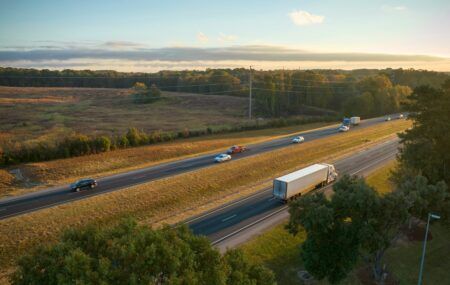A two week New Zealand Transport Agency (NZTA) trial gets underway today (March 6), which will allow electric vehicle (EV) drivers access to five priority bypass lanes in Auckland.
The NZ Transport Agency is working to support the government’s aim of significantly increasing the uptake of EVs in New Zealand to help reduce greenhouse gas emissions. From March 6-20, EV drivers will be given the opportunity to use specific on-ramps, which will provide faster access to the motorway, reducing travel times. The New Zealand Ministry of Transport is currently consulting on proposed legislative and road rule changes that would enable road controlling authorities, including local and regional councils, the NZ Transport Agency, and other organizations, such as the Department of Conservation, to allow EVs into special vehicle lanes. These changes are expected to take effect on July 1 this year. The government’s program includes a target of doubling the number of EVs in New Zealand every year to reach approximately 64,000 by 2021, and extending the road user charges (RUC) exemption on light EVs until they make up 2% of the light vehicle fleet.
An EV, for the purpose of this trial and the proposed legislative changes, is a vehicle wholly or partly fueled by a battery that is charged by connecting to an electric power supply. All vehicles participating in the trial will be identified by an ‘EV’ sticker and the five onramps will be marked with a sign at the start of the lane.
The Auckland trial is also limited to providing access for EVs to priority bypass lanes, and the trial does not allow them to use bus lanes. Following the expected legislative changes in the summer, it will be up to individual road controlling authorities to decide on a case by case basis whether or not to allow EVs access to individual special vehicle lanes, which include transit, priority bypass, high occupancy vehicle (HOV), and bus lanes. The bylaw enabling the Auckland area trial will be revoked on March 21.
The NZ Transport Agency’s group manager for planning and investment, Robert Brodnax, said opening up special vehicle lanes is one of a number of incentives under the government’s EV program. “The program is designed to encourage more people to choose an EV over a conventional diesel or petrol vehicle for their daily transport needs, thereby reducing greenhouse emissions. Before new legislation and road rules come into force, it’s important that we test the concept of allowing EVs into specific special vehicle lanes and gauge the impact on road users,” Brodnax explained. “The NZ Transport Agency is also currently assessing which special vehicle lanes on the state highway network may be suitable for EVs following legislative changes; this includes looking at safety, lane entry and exit, current and future traffic flow, and the impact on public transport.”




